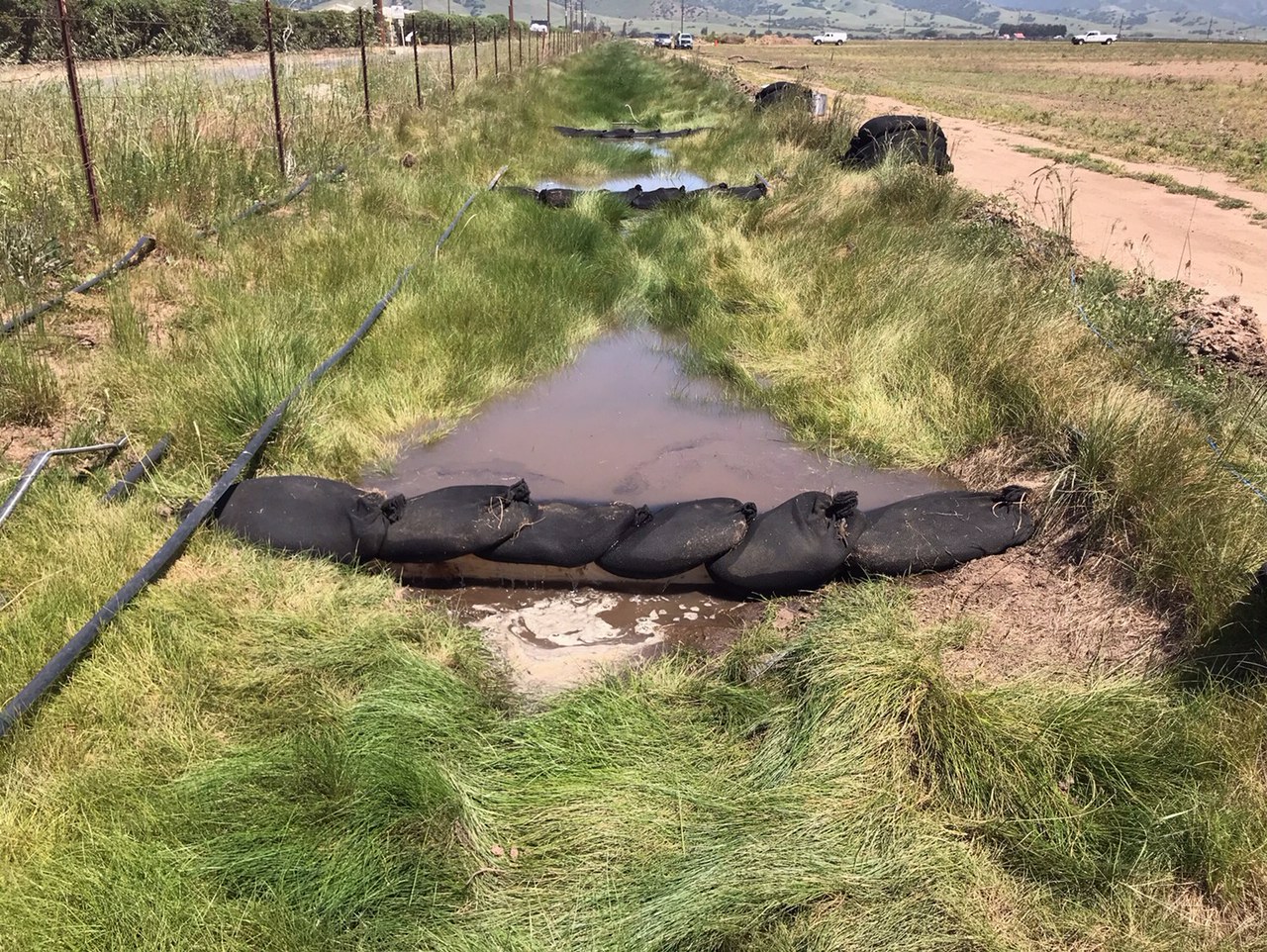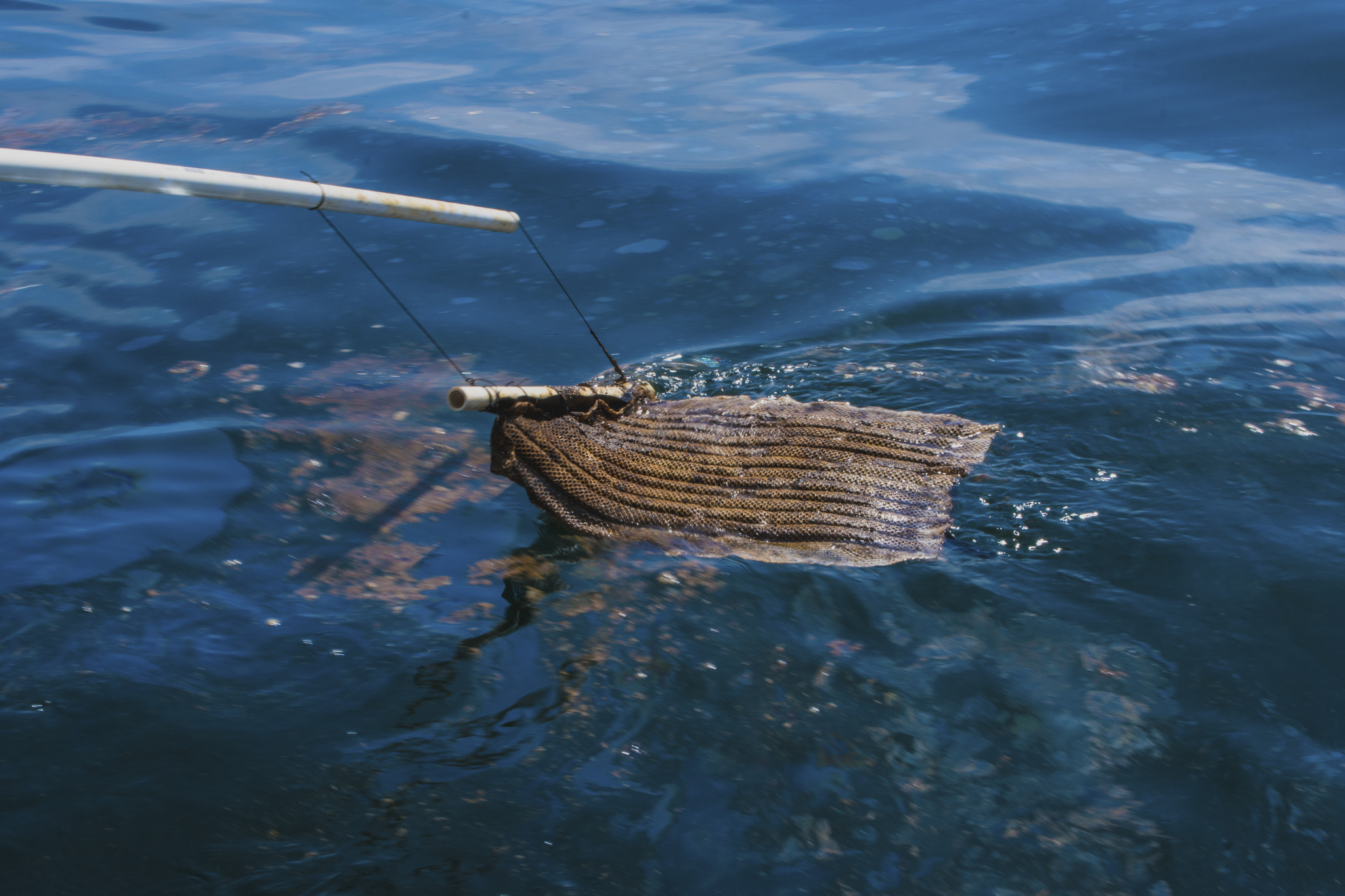REVERSING POLLUTION
Pollution from human activities, such as fertilizer and agrochemical runoff and untreated sewage, present as great a threat to the oceans as overfishing. In Europe, nitrate pollution coincides with areas subsidized by the government. Fertilizer runoff can result in nutrient overload, overgrowth of algae and bacteria that eventually result in dead zones where much aquatic life cannot survive. Harmful Algal Blooms (HABs) also produce toxins that harm humans, pets, and many oxygen dependent species like fish, shellfish, birds, and marine mammals such as otters and seals.
Conventional agriculture results in harmful runoff. In the nearer term, to prevent dead zones, water from conventional agriculture needs to be cleaned up of nutrients and pesticides before being released into coastal waterways. However, commercially viable systems do not exist. Anthrocean supports research to formulate better technology solutions.
Evaluating Nitrate Removal from Agricultural Drainage in Monterey County Using Low Cost Treatment Systems
Central Coast Wetlands Group
Reducing nitrate load in agricultural runoff is a regional issue in Monterey County (as well as throughout California, the United States and much of the world) due to issues of groundwater contamination, harmful effects on aquatic ecosystems, and the potential for excess nutrients to create hypoxic conditions and harmful algal blooms in sloughs, bays and the open ocean. The study of simple, low-cost, minimal maintenance treatment systems for nitrate removal can inform agricultural producers about alternatives relevant to different settings and conditions as they seek solutions to reduce pollution leaving the farm.
Read more
Constructed wetlands, vegetated ditches, and woodchip bioreactors are three low-cost alternatives that hold promise for treating agricultural runoff through removal of nitrates. Each of these systems may be appropriate to different settings depending on the amount of nitrate that must be removed, the ability to install them in pre-existing drainages, and other land use considerations and values. System size and capacity requirements are dependent on nitrate removal rates, while denitrification rates are affected by a number of environmental and farm operational conditions and must be taken into account when designing a system.
Key parameters that effect denitrification rates and efficiency include nutrient load of discharge water, water temperature, flow rate, and in ditch retention times. Within a working farm environment, all these variables fluctuate significantly and thus, a range of conditions must be cataloged and integrated into treatment designs.
This study is focused on generating nitrate reduction rates under varying environmental conditions to help farmers understand the sizing of the treatment systems needed to reduce nitrate concentration and load through determining local decay rate constants for a variety of treatment systems.


Comparing Methods to Clean Up Nutrient Run-off: Multi-chambered Bioreactor Project
Central Coast Wetlands Group
Agriculture intensification has resulted in increased fertilization, and correspondingly increased nutrient runoff. This runoff can have disastrous effects downstream, decreasing oxygen in waters, or hypoxia, that cause much life in rivers and oceans to die. Hypoxia has been observed in Elkhorn Slough, from agriculture in Salinas, CA.
Read more
Laboratory studies have tested different materials to absorb nutrients, to clean up runoff, but the efficacy of these materials can vary with climate and nutrient type. However, small scale laboratory studies need to be vetted at pilot scale on the field, to test the efficacy of materials. With funding from the Anthropocene Institute, Ross Clark who leads the Central Coast Wetlands Group (CCWG) operating out of Moss Landing Marine Laboratories, has put in place sensors to test levels of nutrient runoff from a multi-chambered bioreactor in a pilot scale system.
The bioreactor has 24 hour access to farm runoff where numerous materials can be tested in replicates against controls to determine efficacy, controlling temperature and flow rates and offered in an open source, user friendly database available to farmers and other stakeholders to assess the efficacy of materials on nutrient remediation.
The bioreactor tested multiple methods of cleaning up nutrient run-off in the bioreactor: heated vs cooled wood chips vs duckweed. Cooled wood chips had the highest nitrogen reduction rate (45%), while heated chips and duckweed showed far less efficient, 28% and 2% respectively. The testing of other materials is already underway, comparing these rates to those of wetland channels, and algae. The CCWG will populate a materials database available via the web on the uptake curves.
Pesticide Removal Project
University of California, Davis
The UC Davis Marine Pollution Studies Lab at Granite Canyon conducts applied toxicology research in watersheds, estuaries, and coastal waters. This project investigated methods for reducing pesticide loading in agriculture and urban runoff.
Read more
The lab found that Biochar reduced concentrations of chlorpyrifos and imidacloprid to less than detectable levels. Granulated activated carbon reduced chlorpyrifos to less than detectable concentrations, but not imidacloprid.
A second study investigated a mobile filtration unit with biochar, to investigate performance on different sites. A paper published with the findings is here, and a video about the findings is here.


Oleo Sponge Field Test
Argonne National Laboratory
Researchers at Argonne National Laboratory have invented Oleo Sponge, a technology for oil cleanup and recovery from bodies of water using a nanotechnology-coated sponge. Oleo Sponge’s oil sorption performance was demonstrated at the laboratory scale.
Read more
Anthrocean funded a test of Oleo Sponge in a field environment to see how it would perform in cleaning up naturally occurring oil seeps as a proxy for performance in a real-world oil spill scenario. Oleo sponge successfully captured difficult to clean oil sheens with a reusable sponge and without the use of gelation agents.
To view result details, see the Final Report.
Check out this Argonne News Brief: Oleo Sponge Aces First Real-World Test
Protecting People and the Planet from Toxic Pesticides
Earthjustice
Earthjustice works to get dangerous pesticides out of our fields, water, and food supply, and to protect the communities and ecosystems threatened by these toxic chemicals. Most recently, Earthjustice won its decades-long fight to ban the use of chlorpyrifos on food nationwide. Anthrocean supported this work, and also outreach to communities on the effects of pesticides in the environment.
Protecting Pollinators and Humans from Toxic Pesticides
Center for Food Safety
Center for Food Safety’s mission is to empower people, support farmers, and protect the earth from the harmful impacts of industrial agriculture and promote sustainable food and farming alternatives. In 2018, support from Anthropocene Institute enabled CFS to continue to be a leader in the movement to halt the use of toxic pesticides, including neonicotinoids, and protect pollinators and human health from the impacts of these pesticides. Some of their accomplishments included:
Read more
 Reaching a settlement with the U.S. Environmental Protection Agency (EPA) after a 6-year legal battle. The 2019 settlement requires the EPA to address the impacts of clothianidin and thiamethoxam on endangered species, and withdraw 12 neonic pesticides from the market and revoke their pesticide registrations, both firsts.
Reaching a settlement with the U.S. Environmental Protection Agency (EPA) after a 6-year legal battle. The 2019 settlement requires the EPA to address the impacts of clothianidin and thiamethoxam on endangered species, and withdraw 12 neonic pesticides from the market and revoke their pesticide registrations, both firsts.- Launching of the Wild Bee ID App and Website, aimed at educating North American residents about our thousands of species of native bees and what we can do in our own backyards to help conserve these essential pollinators.
- Filing a groundbreaking legal petition calling on the EPA to test the whole formula of all pesticides. The EPA currently only analyzes the “active” ingredients, while many of the most dangerous pesticide elements are so-called “inert” ingredients. CFS is now organizing the community and members of Congress and State Attorneys General to pressure the agency to require whole formula testing.
Further Resources
Phytoremediation database – lists plants and algae that can absorb and break down pollutants.
